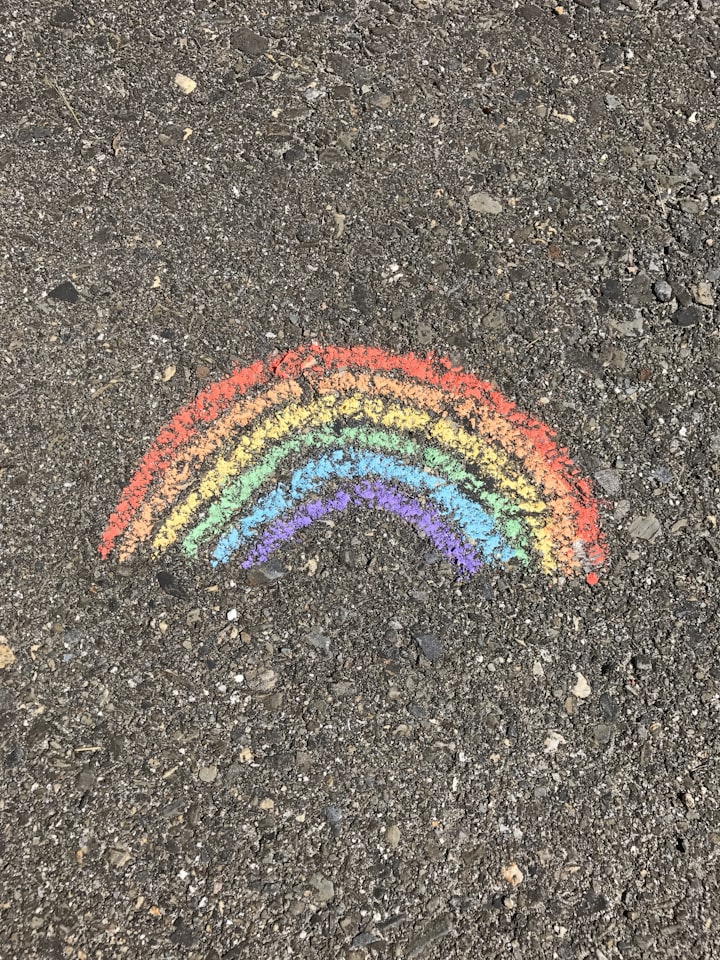Changing to Give Indigenous Populations Holistic End-of-Life Care
Healthcare

Abstract
Indigenous people face systemic discrimination within the healthcare system regarding palliative and end-of-life care. Through research of multiple peer-reviewed articles one could infer and see the systemic discrimination of palliative and end of life care in the Indigenous populations. Health inequity and low health literacy on individual, community, regional, and federal levels exist in palliative care regarding Indigenous populations. With a new healthcare goal of therapeutic, culturally safe, client centered care, the government and healthcare systems need to look at the health inequity experienced by Indigenous people to allow a more just system.
Changing to Give Indigenous Populations Holistic Palliative Care
Indigenous people in Canada experience systemic discrimination causing a need for trusting therapeutic relationships. End-of-life and palliative care (which will be referred to as palliative care throughout this paper) can be better organized respecting the traditions and culture of Indigenous people. Health equity needs to be a focus within the healthcare system. Through Government and Healthcare services, health promotion, socioeconomic improvements, and an increased workforce of healthcare providers more culturally appropriate, client-centered care can be obtained regarding Indigenous populations.
Systemic Discrimination and Subsequent Costs
Systemic Discrimination
Indigenous populations experienced colonization which has led to distrust within the healthcare system. Through past trauma, which encompasses intergenerational effects and ongoing discrimination and racism, the need of palliative care becomes more prominent as evident by recent studies suggesting that an increased risk of dementia is associated with trauma, hence, Indigenous populations are at an increased need for palliative care. Also, the lack of social determinants of health is resulting in an increasing population aging with life-threatening diseases such as diabetes and cardiovascular disease (Cajax et al., 2018). The government and healthcare system need to collaborate with Indigenous people’s input to reform the outdated Indian Act. In 1876 the Indian Act came out, encompassing only status Indians, but in 2016, non-status Indians and Metis became part of the act encompassing Indigenous people (Potter et al., 2019, pp. 20-21, 135-136). In 1986, the Ottawa Charter promoted health through a public entity rather than individually. The Ottawa Charter promotes socioeconomic needs for success within the healthcare system and wellness of an individual (Potter et al., p. 4). However, through systemic discrimination the Indigenous population faced and faces inequality in Canada due to lack of resources and social determinants of health regarding culturally safe, client centered care discussed within this paper.
High Costs
Palliative care is costly for Canadians compared to other developed countries even though Canada shows poor results. One reason for poor results is unwanted medical interventions. The Canadian healthcare system focuses on acute measures rather than palliative measures. This is true within Indigenous communities as without access to healthcare on reserves, in rural areas, or access to culturally sensitive care in urban areas Indigenous people have no choice but to go to the hospital where healthcare providers prolong life within healthcare means due to training received. Indigenous people would rather enjoy their last days in their home or in a community based palliative care center meaning the healthcare system would save on costs by accommodating these palliative care beds over acute care beds (Quinn et al., 2021).
Infrastructure Barriers are Disabling
Travel costs within the healthcare system and on an individual basis are high compared to if available infrastructure existed for remote communities and if upgraded roads were available for easier access to remote areas. Rural areas have a challenging time accessing urban centers as it takes time to get to any place where healthcare is available. Roads that do exist are hard to navigate posing issues for emergency vehicles, as well, to access these communities. In terms of urban Indigenous populations there is a lack of access to palliative care beds, let alone access to culturally safe and sensitive palliative care (Cajax et al., 2018). If roads and the means to travel was available in remote communities, finances stop most Indigenous in terms of transportation. Financially, it would also be a burden on families to travel such a distance to access care. These costs not only relate to the vehicle and gas itself, but the costs of accommodation close to the hospitalized client.
One such need for culturally safe, client-centered care for Indigenous peoples are larger rooms to allow for large families and communities who wish to be with the client through the palliative care process. Another want in most Indigenous culture is the need for a large room to allow for ceremonial traditions such as smudging, cedar brushing, and drumming (Anderson & Woticky, 2018). Hospitals are offering care based on Indigenous traditions throughout Canada, but it is not universal nor well accepted. The idea of cultural safety and client centered care reached Canada beginning late in the 20th century but needs to incorporate Indigenous values and beliefs (Schill & Cajax, 2019). Slowly, the Canadian system is moving in the right direction, but it is apparent that increased research and work to hasten the progress as the Indigenous population ages is essential. Trust in successful palliative care and increasing knowledge and awareness of Indigenous cultures will allow more therapeutic relationships between healthcare providers and Indigenous clients and result in a better experience for both parties.
Inadequate Healthcare Providers
Indigenous populations face difficulties with healthcare staffing resulting in diminished palliative care. Many employed healthcare providers are not familiar with Indigenous culture. When staff is available their availability seems to be only weekdays during business hours and turnover is high making therapeutic relationships impossible (Schill & Cajax, 2019). Increased promotion, education, and training to aide healthcare providers to give therapeutic care is needed, as this will allow healthcare providers to learn the Indigenous culture to provide trusting relationships between client and provider (Gaspard et al., 2021). There is also a need for interpreters at every step in the palliative care process, so client, family, and healthcare providers understand one another, and care is proper to the Indigenous client. Vital training is needed to improve culturally sensitive and safe care with incentives and education to encourage increased training of Indigenous healthcare providers would prove beneficial in bringing firsthand experience and knowledge of Indigenous culture into the palliative care setting. The current Indigenous staff is few so those providers experience burnout, and due to smaller communities, they also experience problems with client-provider boundaries (Cajax et al., 2018). Besides training and employing more Indigenous healthcare providers, bringing in Elders to aide the current healthcare staff or to supply cultural training would be the most beneficial in knowing the proper ways of the Indigenous peoples. By having Elders involved a reconnection between Indigenous and non-Indigenous peoples that was lost long ago when Europeans came over to Canada can lead to “effective palliative care approaches . . . that empower[s] cultural identity, knowledge, and traditions” (Schill, 2019, pp. 8).
Health Promotion Need
Health promotion towards both Indigenous people and healthcare providers is needed to decrease the growing rate of chronic illness and disease, but also to provide palliative care that is culturally safe for Indigenous clients who don’t know of palliative options. Indigenous are not initiative-taking in asking about their options due to colonization and the residential school systems in which they grew up, as in these systems they were “taught to obey” or trouble would follow; they do not question to avoid being accused of showing disrespect (Gaspard et al., 2021, p. 154). Indigenous are not routinely taught options as it is a stigma that Indigenous people don’t want palliative care. Health promotion is crucial to teach and allow awareness of available options such as homecare and long-term centers; however, much more dedication is needed to make these options attainable and culturally centered. During medical school geriatrics is taught, for example, but the aspects involved in palliative care are not; restructuring is needed (Quinn et al., 2012). Healthcare workers need health promotion and literacy to be trained to follow client-centered care and understand the wants of Indigenous clients (Potter et al., 2019, p. 300). While some will prefer hospital, Catholic centered care, many Indigenous do not want the extra medical interventions and would prefer a quiet safe death at home. Trained providers are also essential to help with the amount of paperwork that is needed for palliative and end-of-life care and after death (Gaspard et al., 2021).
Holistic Views of Positive Palliative Care
The holistic view of Indigenous people to provide client-centered care that respects Indigenous values and culture throughout palliative care is important to change healthcare regimes. In the Indigenous culture western palliative and end-of-life care is not the wish as it is a wish for Indigenous peoples to gain energy to join the spirit world; their body is gone but they live on. Cultural engagement and allowing integration of cultures has shown to heal and allow those of Indigenous background to feel more rooted into what they feel within their bodies and souls. Indigenous people are open to integrating western medicine along with traditional medicine, so as healthcare providers there is a need to be willing to allow this integration for more culturally competent and safe practices. Long term care facilities, for example, do not medicate with herbs or traditional Indigenous cures, do not provide Indigenous foods, do not cater to Indigenous culture with large gathering rooms, and do not allow traditional death practices to occur (Schill & Caxaj, 2019). Western hospitals hide death, usually in the back, and western cultures view “death as a failure” (Anderson & Woticky, 2018, p.56). Indigenous culture, on the other hand, celebrates death and grieving which is to aid the body to reach the spirit world. Western medicine does not allow time with the body, but Indigenous would prefer to dress their own kin after death and spend 24 hours with them after passing of their physical body (Anderson & Woticky, 2018).
Conclusion
Indigenous people have experienced systemic racism and treated unjustly since colonization; change within the Canadian healthcare system can ensure culturally sensitive, therapeutic, client-centered palliative and end-of-life care. Western society needs more awareness of cultural competence of Indigenous people. In terms of palliative and end-of-life care Indigenous people usually prefer to die at home, without excess Western intervention, with the land. However, with the current system Indigenous wishes ignored spiritually or emotionally. By reallocation of healthcare resources, the Canadian Government and healthcare system can learn from Indigenous Elders and provide culturally safe care to Indigenous people, while saving costs on unnecessary interventions. Non-discriminatory therapeutic, patient centered care is important to ensure Indigenous people have holistic palliative and end-of-life care that non-vulnerable populations receive.
References
Anderson, M., & Woticky, G. (2018). The end of life is an auspicious opportunity for healing: Decolonizing death and dying for urban Indigenous people. International Journal of Indigenous Health, 13(2), 48–60.
Caxaj, C. S., Schill, K., & Janke, R. (2018). Priorities and challenges for a palliative approach to care for rural indigenous populations: A scoping review. Health & Social Care in the Community, 26(3), e329–e336. https://doi.org/10.1111/hsc.12469
Gaspard, G., Gadsby, C., & Mallmes, J. (2021). Indigenous end-of-life doula course: Bringing the culture home. International Journal of Indigenous Health, 16(2), 151-165.
Potter, P. A., Perry, A. G., Stockert, P. A., Hall, A. M., Astle, B. J., & Duggleby, W. (Eds.). (2019). Canadian fundamentals of nursing (9th ed.). Mosby/Elsevier Canada.
Quinn, K., Isenberg, S., & Downar, J. (2021). Expensive endings: Reining in the high-cost of end-of-life care in Canada. CD HOWE institute. https://www.cdhowe.org/sites/default/files/2021-10/Commentary_608.pdf
Schill, K., & Caxaj., S. (2019). Cultural safety strategies for rural Indigenous palliative care: A scoping review. BMC Palliative Care, 18(21). https://doi.org/10.1186/s12904-019-0404-y
About the Creator
Reader insights
Outstanding
Excellent work. Looking forward to reading more!
Top insight
Expert insights and opinions
Arguments were carefully researched and presented






Comments
There are no comments for this story
Be the first to respond and start the conversation.